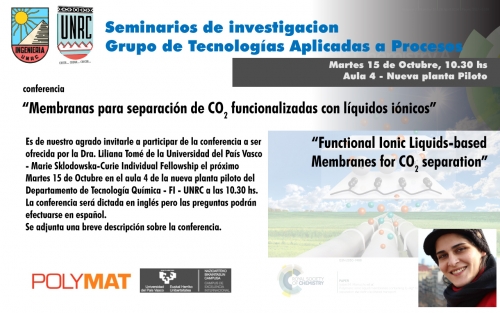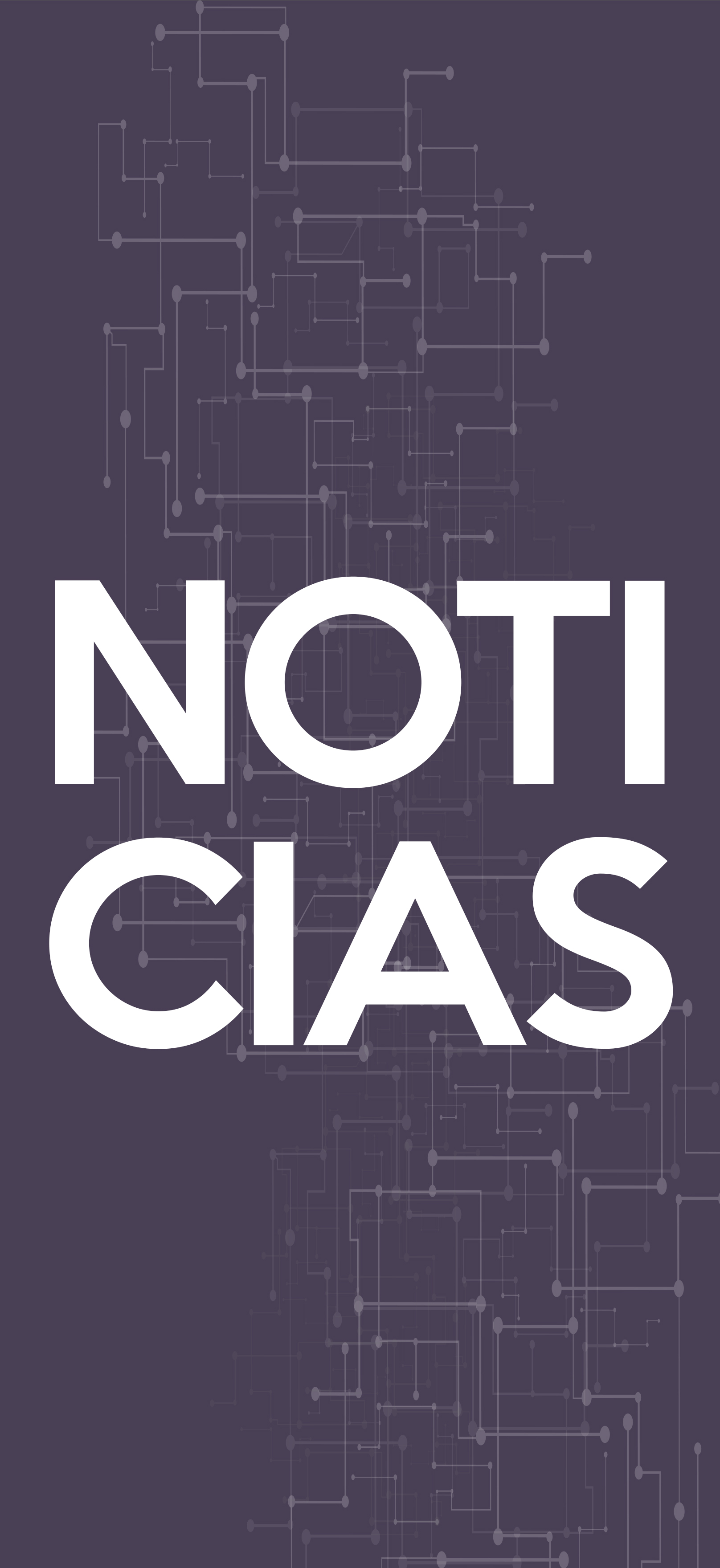
CONFERENCIA: "MEMBRANAS PARA SEPARACIÓN DE CO2 FUNCIONALIZADAS CON LÍQUIDOS IÓNICOS" DE LILIANA TOMÉ
Autor: Lic. Claudia Bazán - Publicado: 10 de Octubre de 2019
El Grupo de Tecnologías Aplicadas a Procesos invita a la Conferencia dictada por la Dra. Liliana Tomé, a desarrollarse el Martes 15 de Octubre a las 10:30hs en el Aula 4 del DTQ
Polymer-based iongel membranes for CO 2 separation
Liliana C. Tomé
POLYMAT, University of the Basque Country UPV/EHU, Donostia-San Sebastian, Spain.
The topic of global warming is one of the most important environmental issues that our
world faces today. The adoption of protocols on the climate change makes the reduction of
greenhouse gas emissions, through carbon dioxide (CO 2 ) capture and re-use/storage, crucial.
Hence, effective removal of CO 2 from process streams containing other light gases represents
an ongoing chemical and economical engineering challenge faced by the natural gas, electrical
energy, and syngas production sectors.
Taking into account the extremely broad range of chemical and structural possibilities of
ionic liquid chemistry, and the undeniable engineering and economic advantages of membrane
technology, there has been growing interest in the exploitation of iongel materials for CO 2
separation membranes. The use of the structure–property relationship of ionic liquids enables
the molecular control of their CO 2 -affinity, while the incorporation of polymers allows the
introduction of structural material features relevant for gas separation.
In this communication, a perspective on different strategies to design efficient CO 2
selective membranes based on ionic liquids and polymers will be presented. The aim is to show
the versatility of these materials, point up their easy preparation either by casting or UV
polymerization, and reveal insights into the relationships between gas transport properties
and different ionic liquid structures, polymer features, and iongel compositions. Furthermore,
the CO 2 separation efficiency of polymer-based iongel membranes will be discussed, as well as
breakthroughs and key challenges in this field.

